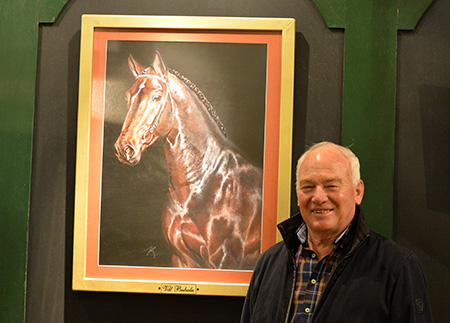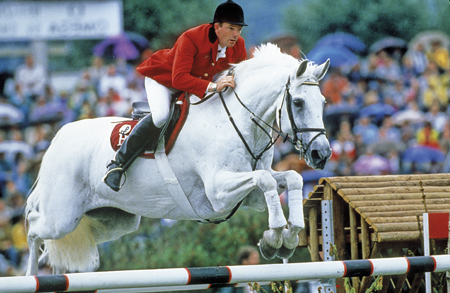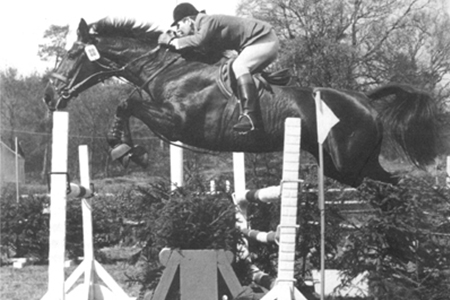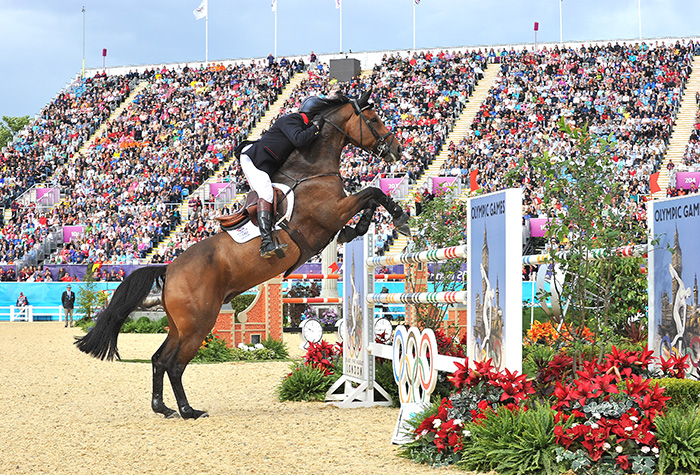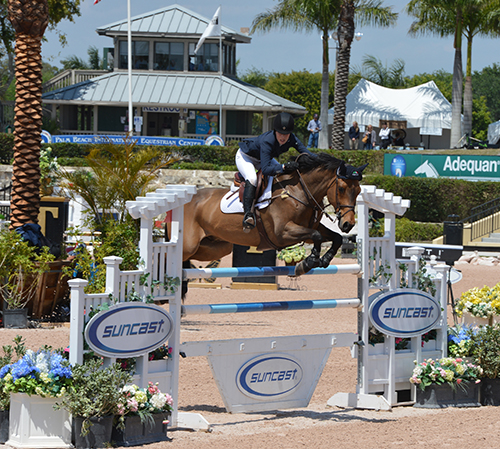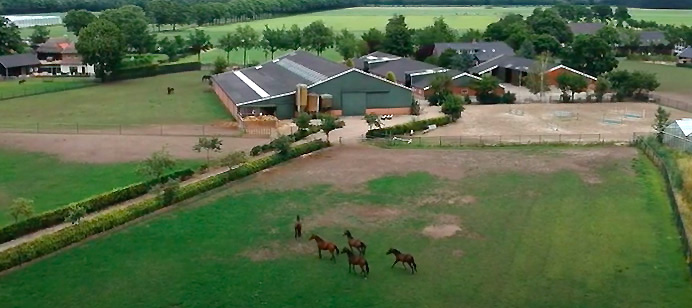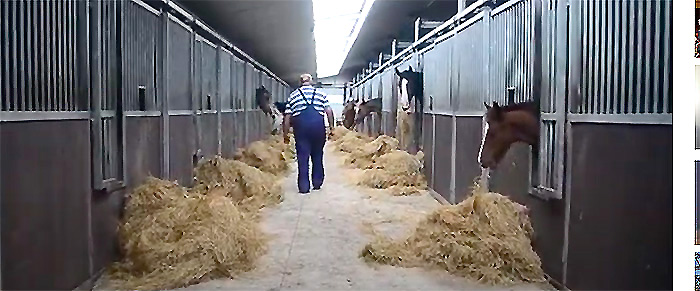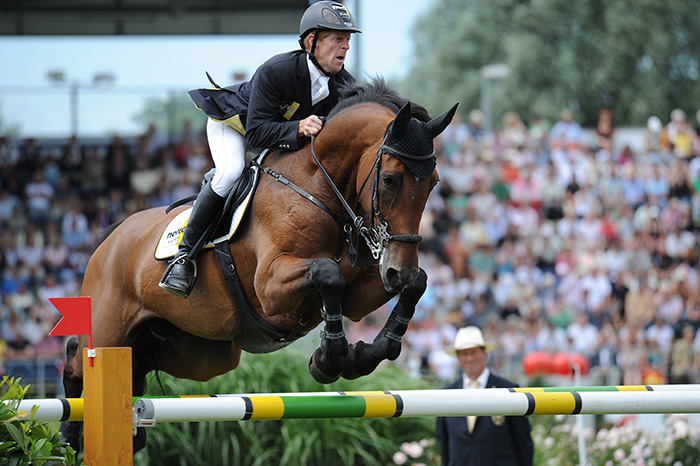I set out to find the greatest mares in showjumping history with the aid of four acknowledged experts, Ludwig Christmann, Thomas Nissen, Egbert Schep and Arnaud Evain. Here is the view from Holland…
(you can find the first two parts of this four part feature with Ludwig Christmann and Thomas Nissen HERE)
Egbert Schep
Egbert is an influential Dutch breeder and an acknowledged expert on bloodlines. Starting out as an 18-year-old horse dealer, Egbert’s business just grew and grew until in 1990, Egbert and Annemieke Schep decided to build new accommodation in Tull en ‘t Waal. These days, the business has changed from dealing towards the breeding, rearing and training of young horses. Stal Schep also stands a collection of exciting stallions.
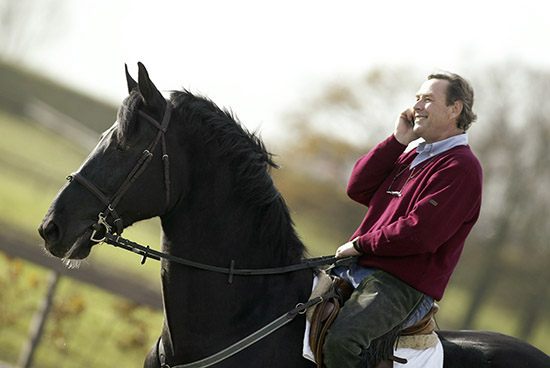
This was Egbert’s response to my question:
“It’s quite difficult to give really a top five of favourite brood mares, but checking offspring, the five mares in Holland I think are very good are:
- Lady Third Black (Burggraaf x Nimmerdor)
- Oase van de Heffinck (Elmshorn x Major de la Cour)
- Elottie W (G. Ramiro Z x Farn)
- Ovanta I (Lux x Nimmerdor)
- Ulen (Niagara x Harmonie)
Lady Third Black
Lady Third Black was foaled in 1993, and by Burggraaf, out of a Nimmerdor / Pericles xx / Joost mare. Burggraaf was a hugely influential stallion in the emergence of the Dutch showjumper. He brought the blood of the great Holstein founding fathers, Landgraf and Cor de la Bryère to The Netherlands, he was by Landgraf, from a Cor de la Bryère mare … but not without some drama!
While Burggraaf was undertaking his KWPN stallion test at Ermelo, he was sent home in very controversial circumstances. Burggraaf’s blood test showed that Landgraf could not be his sire.
Burggraaf’s German breeder was contacted, but was sure that no other stallion could have covered the mare – so the Holstein Verband was contacted and asked for a blood sample – whereupon it was revealed that the Holstein Verband had made an error in the recording of their leading sire’s blood type. Burggraaf WAS by Landgraf, and the young stallion was back into the 100-day test.
He was successful in that test and received 8.5 points for his jumping and 9 for his character (on a scale of 1 to 10).
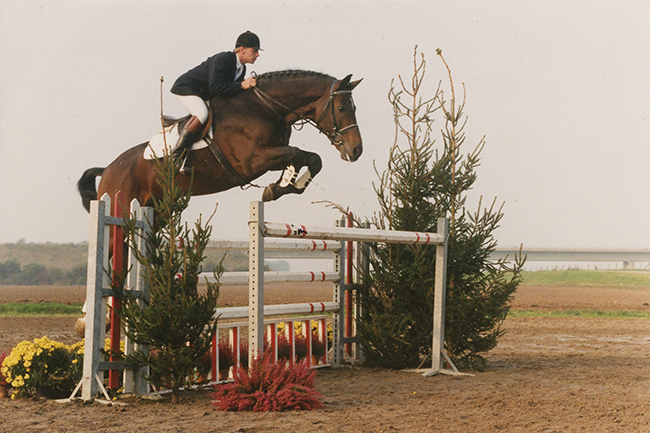
Burggraaf (photo – Jacob Melissen)
However, like many of the greatest stallions, Burggraaf had difficulties with the Dutch Licensing Commission. After inspecting his first crop of foals, he was only awarded a reserve premium, but fortunately his progeny soon proved their sire’s worth.
Burggraaf stood for many years at the Nijhof Stud, according to Jeanette Nijhof: “Burggraaf stamped a lot of his babies with the nice Landgraf face. Most of them were good movers and jumpers. His best combination was with some Thoroughbred on the mother line, for instance, he crossed well with Furioso xx bloodlines, through the stallions, Voltaire and Le Mexico.”
Lady Third Black is out of a mare by another of the Dutch Jumping Greats – Nimmerdor
Wiepke van de Lageweg bought Nimmerdor at a stallion show as a two-year-old, for the (then) considerable sum of 25,000 florins. Nimmerdor was to transform Wiepke the cattle dealer into one of the world’s leading stallion keepers…
Wiepke had started to develop his interest in horses, and purchased his first horse in June of 1972; coincidentally, Nimmerdor the horse that was to make Wiepke’s name, was born that same month as Wiepke! He purchased the then three-year-old stallion from breeder J.A. Dijkstra of Woudsend.
Nimmerdor, the first success for the VDL stud
Jenneke Smit tells the story in her article, Quality wins the Contest in IDS magazine, 2009, the year the family van de Lageweg were declared KWPN breeders of the year.
Wiepke told Jenneke:
“In 1975, I took my first stallion, which I found in Holstein, to the selection in Zuidlaren. Unfortunately, he wasn’t good enough and didn’t make it past the second round. After that, I decided to sit in the stands until I saw the best stallion of the selection. When Nimmerdor came into the ring, I liked him right away; he was my kind of horse: athletic, youthful, and with a nice head. At the time, I really didn’t know anyone in the horse world, so I approached the breeder there at the selection, but Nimmerdor wasn’t for sale.”
“That was a Saturday evening. On Monday evening, I went to the breeder’s home. He told me again that Nimmerdor wasn’t for sale, but he let me look at his dam and granddam in their stalls. The dam was really beautiful, and I liked the granddam as well, although she was a heavier type. The breeder asked if I wanted to sit down for a cup of coffee, and things got better from there. Ultimately, he said that he would only sell Nimmerdor for ‘a lot of money’. Then, I got up, walked into the hallway, and said that he should discuss the matter with his wife and knock on the door when I could come back in the room again.”
“Then he named his price. It was a lot of money for a still unapproved stallion, but I wanted him. I had to buy Nimmerdor!”
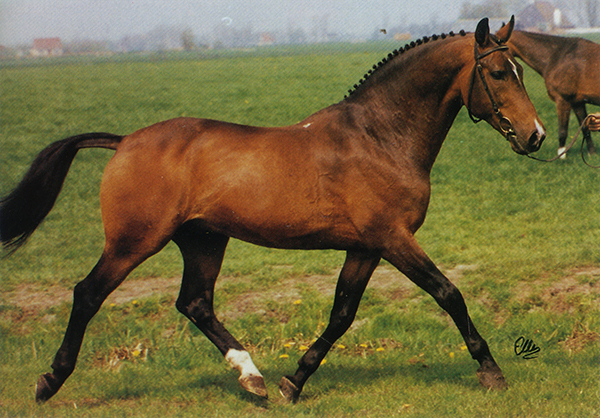
Nimmerdor
As a brood mare Lady Third Black was a sensation, just look at her foals:
1998 – Rady Third Black (by Concorde), 1.50m with Matthew Boddy (GBR)
1999 – Fadl Allah (aka Silvano Black) also by Concorde, 1.60m with Emile Hendrix
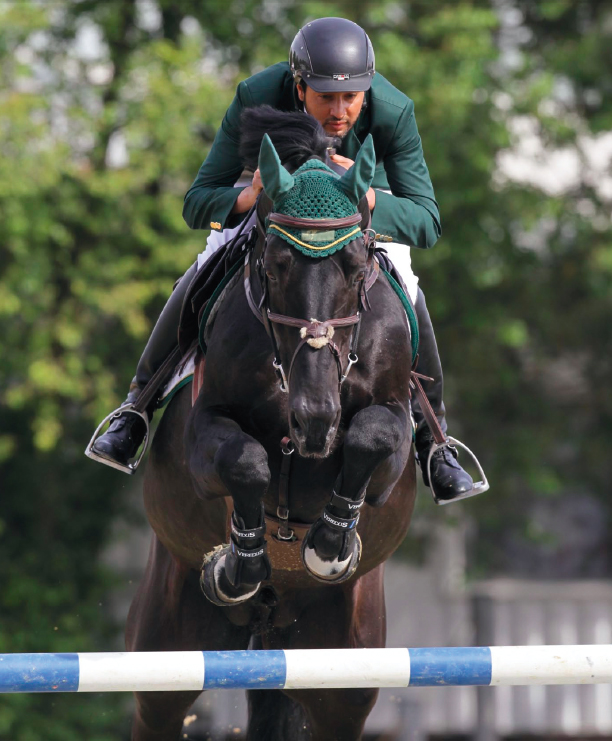
Vanhoeve (photo Julia Rau)
2002 – Vanhoeve (Concorde again) 1.60m with Khaled Abdulaziz Al Eid
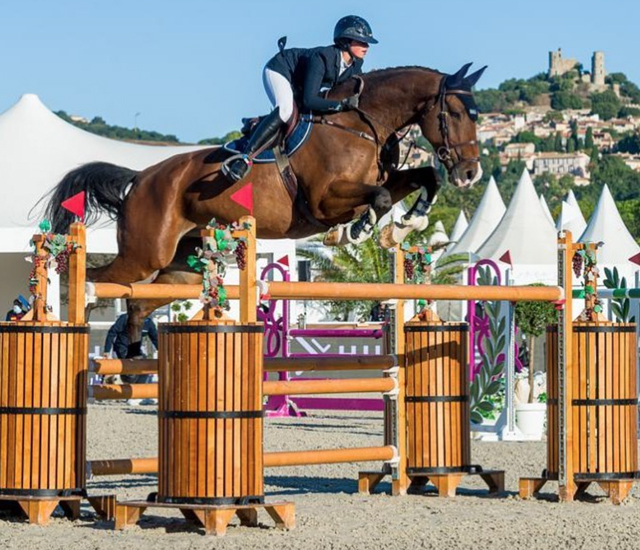
Erfurt
2009 – Erfurt (Tangelo vd Zuuthoeve), 1.50m with Emanuel Massimiliano Bianchi (ITA)
2013 – High Five (Toulon) 1.45m with Julia Houtzager Kayser (AUT)
Licensed sons: Goldstar H (Tangelo vd Zuuthoeve) with KWPN and Zippo RN (Quattro B) AES
This great producing mare, Lady Third Black, was bred by B.T and W. Geesink, but she was bought as a broodmare by Henk Hoeve in 1998. Lady Third Black is the mare in the KWPN studbook with the most progeny in international sport – from 17 foals no less than nine made it to international sport!
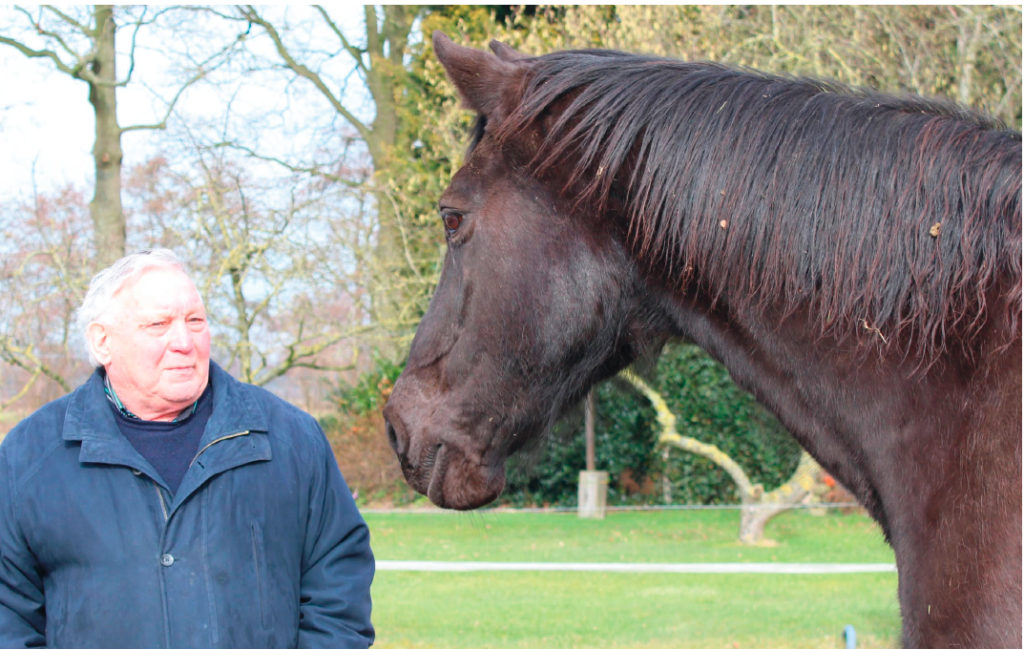
Henk Hoeve and ‘The Black’ (photo – Karin de Haan)
“What is quality? You won’t hear me say I know. I also don’t like people who are in the front with the opinion. Over the years I’ve had some good times and some not. I am now 82 years old and have learned a few things through trial and error. Then what is it? Quality is a feeling in a horse, I can’t explain it well. You tell us,” Dutch breeder, Henk Hoeve turned the question on journalist, Karin de Haan when she interviewed him in July 2013 about the mare he calls The Black, for the KWPN magazine, IDS.
As we talk, looking through the window of the farm house of Hoeve we see the twenty-year-old black Lady Third Black strolling past in the meadow. That helps…
“I like to see a horse with a beautiful head, an expressive eye, a height of between 1.65m and 1.70m, a mare with length and depth and a certain appearance, says Henk. “And yes, The Black has always had that combination of factors. Her children too. That is what makes her so valuable as a broodmare.”
“I remember when I bought her. She cost serious money back then. But she had ‘something’. And her Concorde foal was very good. In the end, quality pays off, as in this case too. Just the Concorde that came with it, I sold for about twice the amount I paid for the mare and foal. That is why I think that quality in your breeding is extremely important.”
“I started with harness horses sixty years ago, then I had ponies, and for the last twenty years I have been in showjumping horses. I only skipped the dressage horses, I don’t like that world of ‘nitpickers’. But whatever you breed, if it performs what it was bred to do, you’re doing it right.”
“In show jumping horse breeding this means that they have to jump at a high level. That does not mean that I necessarily think that broodmares should participate in the sport themselves. The Black has never run in sports either. What matters is that the children of a broodmare perform. That goes well with The Black.”
“As a breeder you will find out over time whether your mare breeds well or not. You just have to keep your eyes and ears open. I prefer to sell my breeding products young. Then the investment was the least large. Having a rider involved is simply a too expensive affair.”
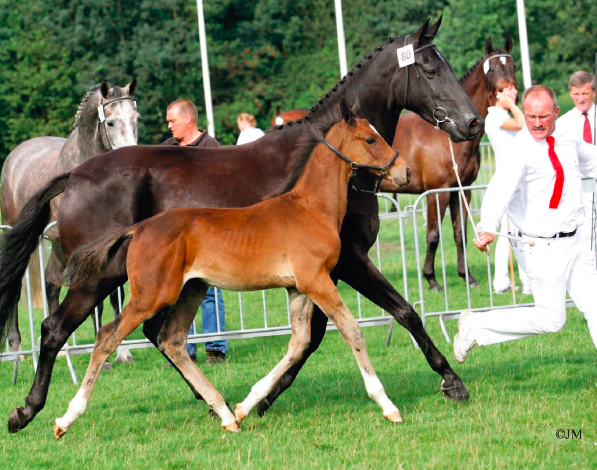
The granddaughter of Lady Third Black is this keur mare Zopina H (v.Tangelo v.d. Zuuthoeve), here in Exloo 2008 with a foal by Berlin (Photo – Jacob Melissen)
“The first two Concordes I had out of The Black I sold as fairly green horses. And well sold, may also be said. They stood out in sports. Of course you also need a bit of luck, but I think quality always comes up in the end. You can have your expectations, but they also have to be fulfilled.”
“The Black comes from the Pina bloodline, that was what made her interesting to me, and why I went to see if I could buy her. The Pina strain is a good breeding strain. The important characteristic of good breeding stock is that good progeny don’t happen once, but time after time. You don’t have to rely on a fluke in breeding. I also think that the combination of Viscount with Nimmerdor and behind it an English Thoroughbred (Pericles xx) fits well. You need a dash of blood in today’s breeding. That gives blood, hardness and appearance. Things that belong to quality.”
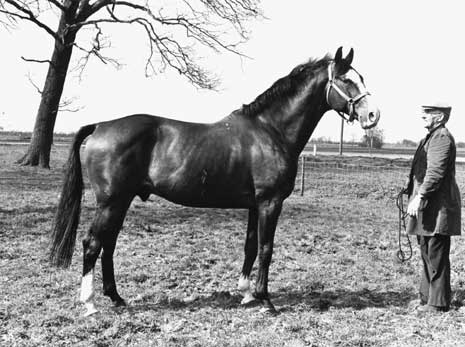
Joost was another of the foundation sires brought from Holstein to The Netherlands. He was by Consul by Cottage Son xx, out of Ulana by Anblick xx
The dam line starts with the mare Pina (by Joost). This mare was born at the farm of J.A. Ter Borg Folkers in Sellingen on May 7th in 1974. She was tall, 1.71m and was awarded the ster and preferent predicate. She comes from an NWP line. She produced two daughters who were very important in the jumping horse breeding. Upina (by Cadmus xx), has a lot of influence on the breeding of Familie Venderbosch, The Radstake.
Oase van de Heffinck
Another of the five mares chosen by Egbert Schep is Oase van de Heffinck. The mare is by Elmshorn, who started life in Holstein as Lorrado. He is a mix of the stallions that kick-started the jumping breeding in the marshes: by Lord out of a mare by Corvado, who combines Cor de la Bryère and Ramiro. Elmshorn was the sire of two 1.60m jumpers, Victor and Wilson.
Oase van de Heffinck was bred at the van Heffinck Stud by Hamerlinck family. Melanie Hamerlinck explained to me that she moved to another stud early in her life:
“Oase was bred here, my father rented the mother of Oase because he liked the pedigree and the type. Oase was a great mare and had super jumping qualities with a great mentality, a bit short in her body so to breed with her, you needed a longer stallion.”
“We sold Oase at age of five to the family Van de Plasse. They rode her really well, won a lot 1.40m classes and breed successfully with her.”
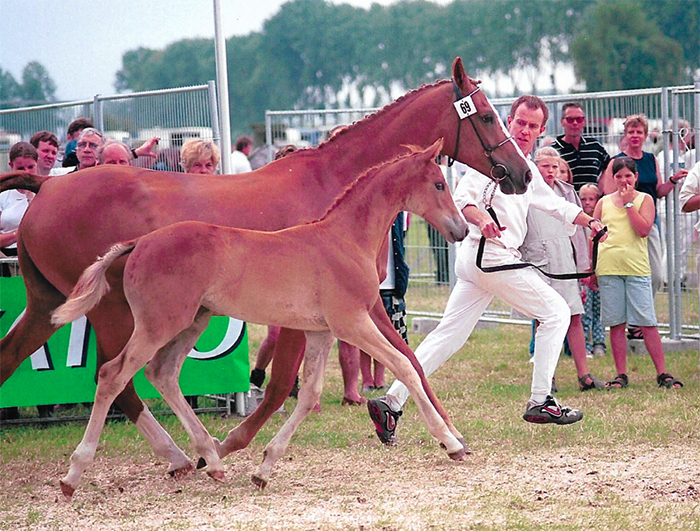
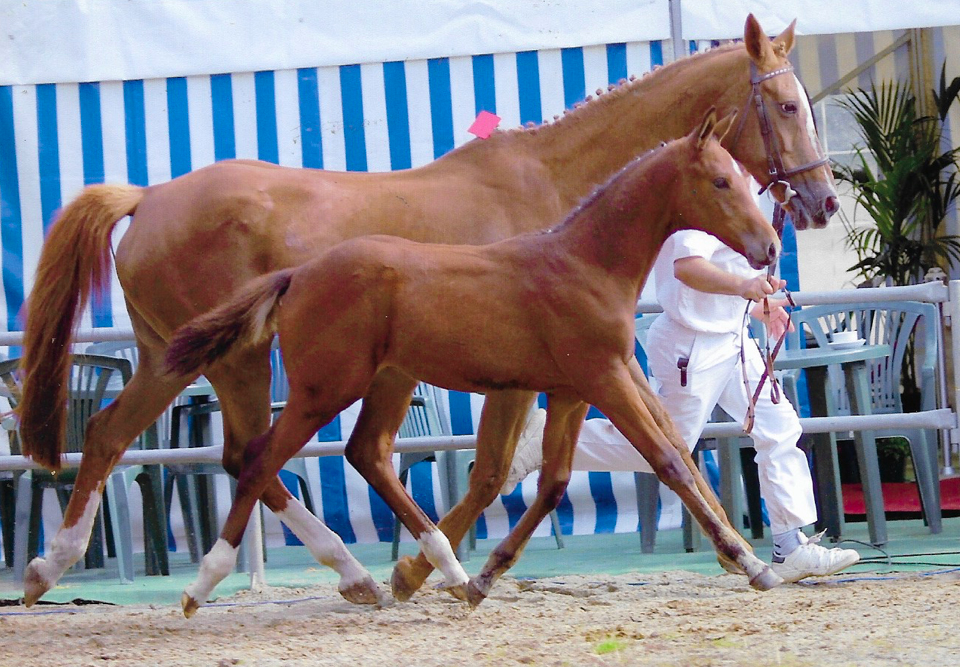
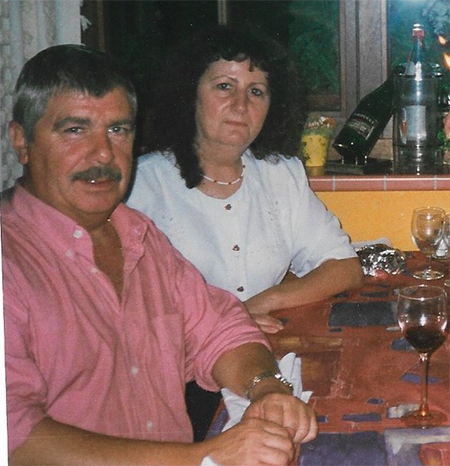
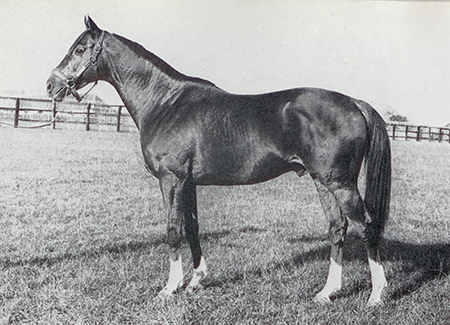
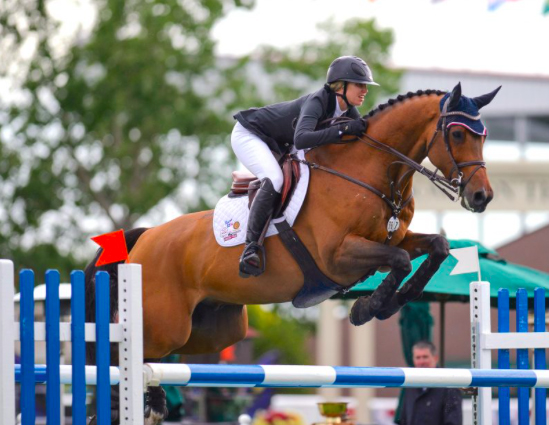
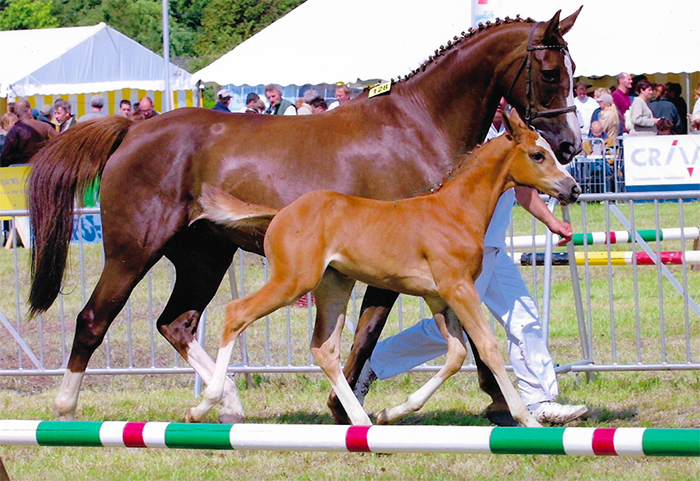
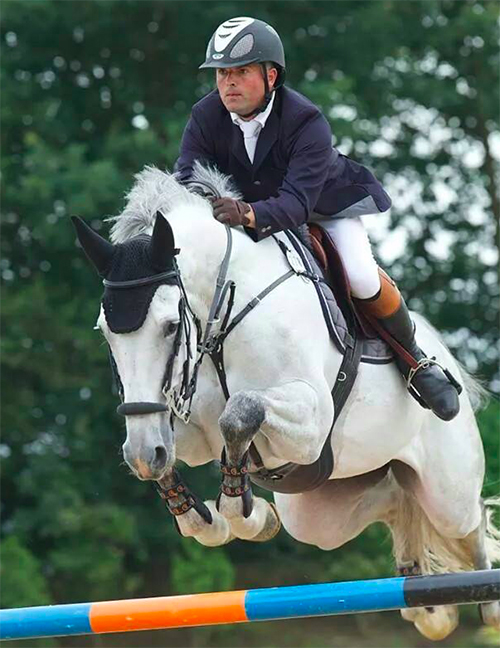
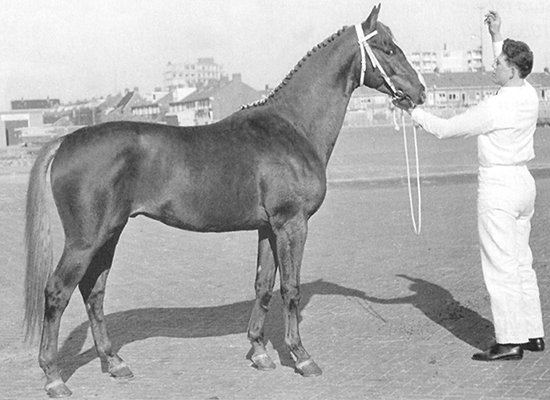
A delegation of Dutch breeders travelled to the Trakehner stallion licensing in 1964, headed by the Dutch inspector, J. K. Wiersema looking for new blood for the emerging Dutch Warmblood. They purchased Marco Polo for a very reasonable DM7,000 but the reception back home in Holland was not encouraging. According to Jacob Melissen in his Leading Stallions of the Netherlands 1992/3:
“When the chestnut was presented to the public in Zuidaren, they were far from pleased with this newfangled ‘upgrader’. True enough, Marco Polo was a rather smallish, still undeveloped stallion at the time, standing 1.60 m, a typical blood horse with long lines. His head was a trifle too long as well, and slightly convex between the eyes, not really a Trakehner type of horse. But Marco Polo would later not only grow into a good riding-type horse of sufficient size and volume – a half-bred looking like a Thoroughbred – but also into one of the greatest sires of the Netherlands, famous for his hereditary jumping talents and obliging character.”
Although Marco Polo didn’t serve many mares in his first seasons, it soon became apparent that his progeny could jump, and suddenly the chestnut was popular.
The first horse to really announce the arrival of a new jumping sire was the mare, Elzette, who teamed with a 15-year-old Franke Sloothaak became Royal Dutch Federation Champion in 1973. The following year, Franke rode Polo Marco to become Champion of the Young Riders. Another future Dutch jumping star, Henk Nooren, had his initial successes with Jonker Arno, while in the United States, Katie Monohan was successful with Polo Boy, as was Melanie Smith with Vivaldi. Phillippe Guerdat rode Pybalia for Switzerland at the Los Angeles Games in 1984, and was reserve for the Seoul Games. Four years later. In Britain, Marius was a sensation with Caroline Bradley – winning the Birmingham Grand Prix, the Queen Elizabeth II Cup and the title, Showjumper of the Year 1977. Marius was out of a Sinaeda dam, and went on to sire Milton, one of the most famous showjumpers in history with John Whitaker.
Milton and John Whitaker
Jacob Melissen is a Marco Polo fan: “His products were not just good jumpers, they were always eager to go, ready for any fence, in fact they threw themselves into their work. And if you have a very capable jumper that never says no, the temptation is great to ask too much of it. This was often the fate of the young Marco Polos. Besides, they were late-developers, just like their sire had been. Used improperly, and with violence, even the strongest chain would break.”
Other famous progeny include Paul Weier’s international showjumper, Irco Polo (sire of Casimir, grandsire of Marcoville), Ico (sire of high-jumping specialist Nekoma), Interpol (international showjumper under Freddy Walsh), Legaat (sire of Gräfin and Stoppelhaene), Matador, Otto, Plutus, Recruut (another international jumper for Paul Weier), Salvadro and Topas.
Marco Polo was also a successful broodmare sire. His daughters produced Zadok (by Nimmerdor) and Concorde (by Voltaire). In the USA, Hap Hansen’s Dalfsen and Debbie Schaffner’s Den Ham were both out of Marco Polo daughters.
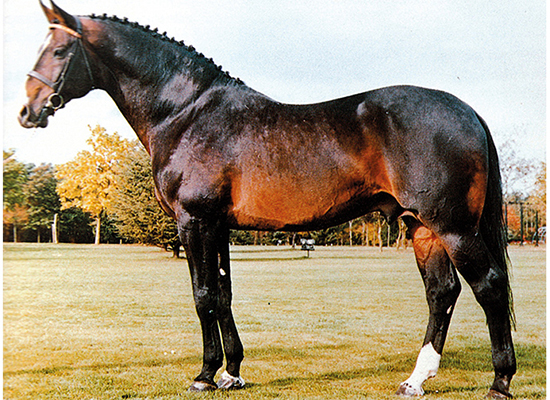
Ramiro
Elottie W is by Ramiro by Raimond, a son of Ramzes aa, out of a Cottage Son xx mare.
Conceived in Holstein, born in Westfalia, licensed at Neumünster, and himself an international performer under Fritz Ligges, Ramiro influenced nearly all European Performance Studbooks.
Ramiro was the most popular representative of the Ramzes line and at one stage was the most frequented sire in Germany. He stood at stud in Westfalia, Holstein, Zangersheide and Holland.
When Ramiro was presented for selection, he was described as the ideal type of the modern Holsteiner – strongly imprinted by his dam, tall and elegant, showing the top line of his grandfather, Cottage Son xx, with powerful frame, a glorious face and large, clear eyes. His excellently formed neck, beautifully set, could still be seen – even when he was an old horse – and is stamped on his progeny. Ramiro displayed a very good walk, a normal trot, and a great canter.
Ramiro was by the Ramzes son, Raimond who was born in 1960 out of Infra by Fanaticker. According to The Holsteiner Horse, “his progeny were very uniform, true-to-type and of good character, were trustworthy and easy to ride. Raimond sired well over 120 daughters who were held in high esteem, especially when they were out of Thoroughbred mares.” He was the sire of eight approved sons but only Ramiro, born in 1965 out of the Cottage Son daughter, Valine, was successful. He was the only foal of Valine, who went to Italy where she was a successful jumping competitor.
Valine H, the mother of Ramiro
Again, let The Holsteiner Horse, tell the story:
“Even as a yearling, Ramiro radiated high quality and sovereignty. As a two-and-a-half year old, he was runner up at the Holsteiner licensing in Elmshorn. He was very big, already standing 1.75 metre high as a three year old, with a clever head on a long, beautifully arched neck. Gentle to handle, just like his grandsire, Ramzes, he was very talented at jumping, which he not only proved by finishing the stallion performance test in Westercelle as the best of his year, but also later at international level with Fritz Legges. However, at the time he was already a self confident stud stallion and occasionally tested his rider with a trial of strength.”
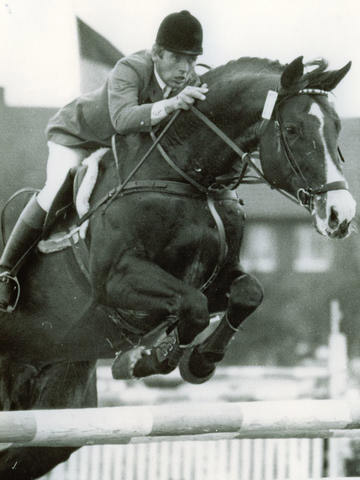
Fritz Legges and Ramiro
Ramiro was one of the first showjumping stallions to actually showjump, and after a successful career with Fritz Legges, he was retired from competitionIn 1974. Ramiro was first sold to Fritz Legges’ sponsor, Rudolf Hirschmann, but he was then acquired by Zangersheide Stud where he became part of Leon Melchior’s two pronged breeding program – Almé and Ramiro.
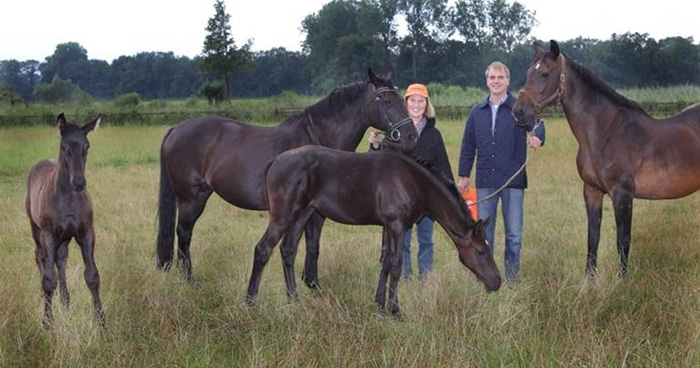
Peter proudly recounts the exploits of the mare the couple bred:
“We bred Elottie W ourselves, that makes us more proud to be the breeders of such a mare. The qualities she gives to her offspring is in one word – Jumping-power. She gave four 1.60m horses and one approved stallion: Lottie W, 1.60m from Nimmerdor = sport name Jazuli; Jarno W, 1.60m from Notaris; Tennessee W,1.60m from Concorde and Amadeus, 1.60m from Guidam.”
Vindicat W and Peter Charles going for Gold at London
“One of her daughters is Oklahoma II W, she is by the stallion Libero H. She gave two 1.60m jumpers and one of them is Vindicat W, the horse Peter Charles won the team gold on at the London Games in their last ride. After a few months he sold Vindicat W to Jessica Springsteen. Jessica made her entrée in the highest level of show jumping with Vindicat W, and she won with him the American Gold Cup. She also started him several times in the Gloabal Champions Tour.”
“We are most proud because we did breed three generations of an Olympic Gold Medalist. Vindicat W himself, Oklahoma II W and Elottie W. Thinking in generations, and all born in our stables.”
“The selection of the stallions we use is a long process were we try to find the best combination by following the sport, study of bloodlines and of course breeders instinct.
The two mares Elottie W and Oklahoma II W gave in total six 1.60m showjumpers and all in a natural way. We do not use transplantation technics or Ixci.”
“The breeding of horses , showjumpers, started, and still is, a hobby. Let’s say a very intensive hobby. We do have five brood mares and in average three to four foals each year. The broadmares are all out of Oklahoma II W. We do sell our foals and sometimes we keep one. We do not buy any horses, we breed only with the line of Elottie W.”
“We are not from a family of breeders, I come out of a family of veterinarians, and we all had a horse, but not real breeders. For us, it started with horse riding, then I met my wife and we got married. We bought a small house in the countryside with some acres of land – and we thought, why not try breeding? We wanted something else, not something that everyone looked for… Then the stallion Ramiro came to The Netherlands, then Belgium, and that was really something special, so we covered with him, and then came the pearl, Elottie W – the W comes from the first initial of my last name.”
You had a profession away from horses?
“I am retired now, but I was the managing director of a publishing company and my wife was a teacher. We both had heavy jobs, but we had fun with the horse breeding. Now we still have six brood mares and we get three to four foals every year. Sometimes we keep one, the most we sell. We have only mares, nothing to do with stallions.”
Which stallions are you using now?
“What we like now is Grandorado by Eldorado. Every year we use one or two proven stallions and two or more younger stallions, the rising stars.”
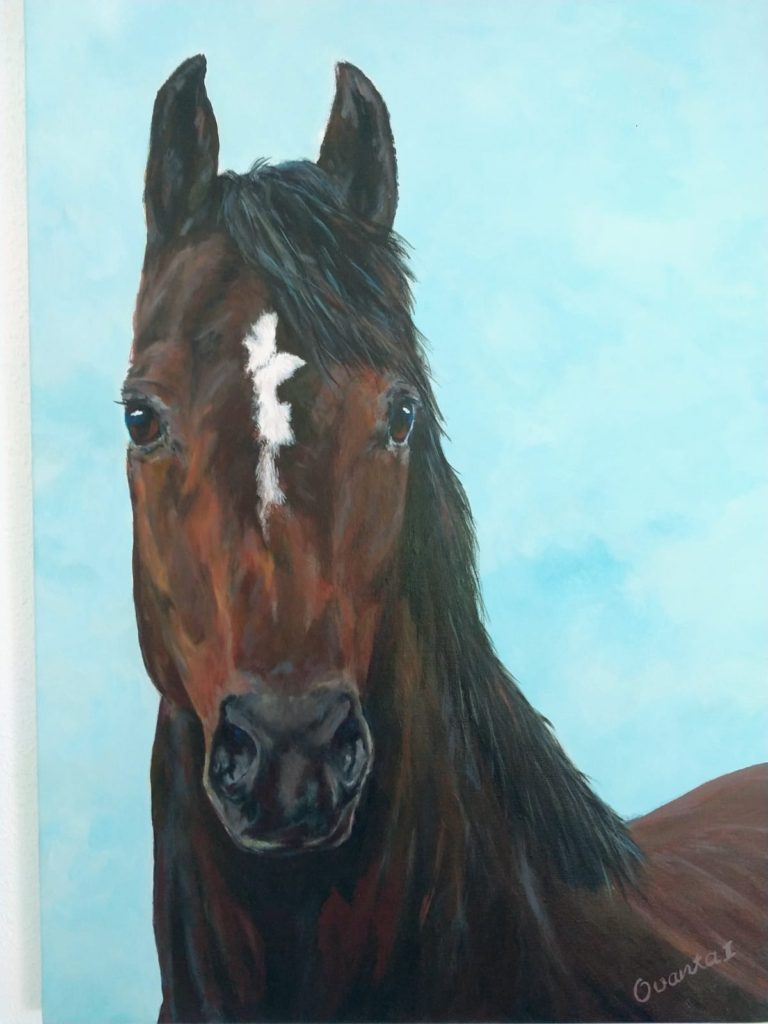
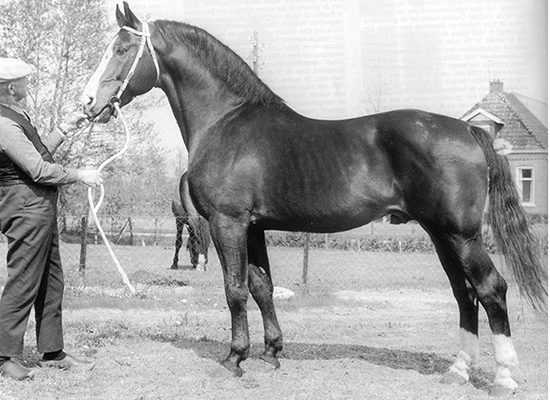
Farn was born in Holstein and descends from the Achill or ‘F’ line that began in 1877. Next to the Ethelbert line, it is the oldest Holsteiner stallion line. Farn himself left only a few offspring in Holstein, and his description in the official Holstein stallion book is less than glowing: ‘Somewhat unharmonious stallion with a lovely head carriage. Built slightly ‘down hill’, good shoulder, flat back, heavily padded loin. Heavy bone, weak pasterns. Good mover.’
However he impressed the visitors from Holland, the NWP committee members who purchased him, hoping his daughters would upgrade Dutch breeding – and he eventually became one of the great stallions of the Dutch Warmbloods.
At the time Farn was brought to Holland, the old agricultural horse was being transformed into the modern sporting model, but the farmers were still wary of the lighter types of Trakehner and Thoroughbred horses that were to play such a vital role – Farn with his Holsteiner heritage and substance was more their sort of horse. However the lighter stallions gained popularity and the breeders in the north lost interest in Farn. Jacob Melissen takes up the story in his1994/95 edition of The Leading Stallions of the Netherlands:
“In the South however, the heavy stallion was received enthusiastically. Southern breeders had been almost overshooting their mark, when trying to generate a fine riding-horse with intensive use of Thoroughbred blood, which had resulted in loss of size, and funny necks. They wanted to restore volume and bone. Farn broke the service records. In 1979 he was offered 236 mares. In 1978 he had been awarded the ‘keur’ predicate, in 1991, he was declared ‘preferent’, seven years after his death. He left eleven approved sons, 123 ‘ster’, 31 ‘keur’, 14 ‘preferent’ and 6 ‘prestatie’ mares.”
Farn was the sire of a number of notable international showjumpers, including Odin N, Black and White, Design and Olympus. Aside from Nimmerdor, Farn sired a number of stallion sons, including: Fanfare, Felix, Garant (ex Flipper), Safari, Telstar and Uddel. By the end of his breeding career, Farn was the sire of 13 approved sons.
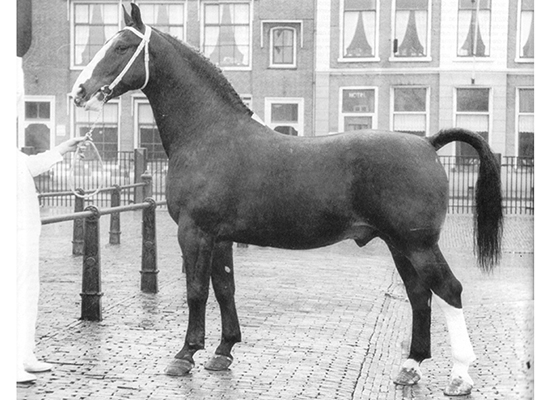
Jacob Melissen in The Leading Stallions of the Netherlands, 1994/95 recounts the historic split in Dutch breeding between the southern based Dutch Improved Agricultural Driving Horse Association (LN), which ‘opted for the Anglo-Norman breed, the invasion of l’Invasion had begun, at the autumn stallion examination of 1947’ and the northern North Netherlands Warmblood Studbook (NWP) which covered the provinces of Groningen, Friesland and Drenthe and traditionally used material from northern Germany.
This northern base produced Sinaeda, another of the foundation sires of the modern Dutch sporthorse.
In 1951, the NWP Stud Book manager purchased 17 three to six year old Holstein mares, which were distributed to NWP members. Of these, the most important was Morgenster – a large and noble beast, standing 1.64 m, with a cannon bone measuring 21.5 cm, and an ample chest that came in just on 200 cm.
Her sire, Gabriel, was a representative of the famed Holstein line of Ethelbert. Ethelbert was ‘a beautiful, elegant refined stallion of totally modern conformation,’ but according to the historian of the Holsteiner breed, Romedio Graf von Thun-Hohenstein, ‘Thanks to his heavy boned, high quality dam, Adophine 6, he passed on more bone and substance than he himself possessed.’
In her new home in Holland, Morgenster produced two approved sons, Senator (by Paladijn) and Sinaeda (by Camillus) – she also produced the mare, Lyda, who returned to Germany where she was the grand dam of the World Cup winner, Anka.
Sinaeda’s sire Camillus was by Cambrinus, by the foundation NWP stallion Kambius. Kambius, born 1936, was one of the more elegant offspring of the Oldenburg stallion Gambo, who came to the Netherlands in 1928 and who was, for the 25 years or so that the heavy Warmblood stood, the most important Groninger stallion.
Camillus was out of Anita, who was by another stallion of Oldenburg breeding, Godin.
Now to modern eyes, Sinaeda might look like an old fashioned ‘clumfer’ but to the conservative Dutch farmers, his progeny were the ultimate modern type and took some getting used to!
According to Jacob Melissen: “His 24.5 cm cannon bone and 215 cm chest were not abnormal at the time. It was his size of 1.68 m, his luxury appearance and remarkably free shoulder action that amazed them. In ten years of service, Sinaeda produced 14 approved sons for the NWP and two for the VLN. The full brothers Senner and Sportman (out of Ritta by Tello) were the most valuable for the breed. Lineages rooted in a Sinaeda, Senner or Sportman daughters are still expensive assets.”
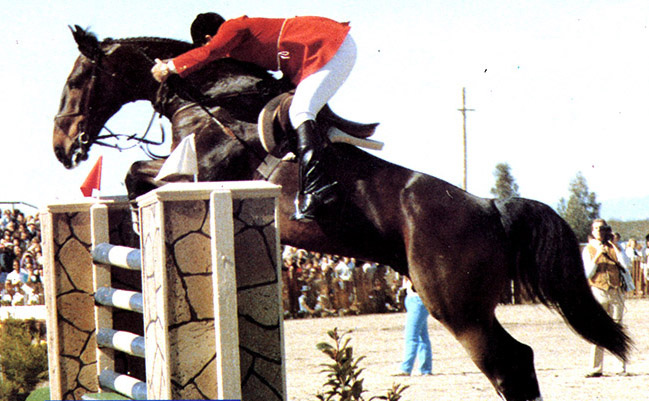
Armand Leone and Jonker
And they could jump. American rider, Armand Leone finished 11th at the 1985 World Cup Finals in Berlin, riding Jonker, a fifteen-year-old gelding by Sportman, out of Tondria by Senator by Camillo.
No Mercy, the silver medallist at the 2005 European Championships, and a competitor at both the Athens and Beijing Games, is by Libero H but out of a mare by Dillenburg – and Dillenburg is out of a mare by Naturel by Lucky Boy out of a mare by the Sinaeda son, Sportman.
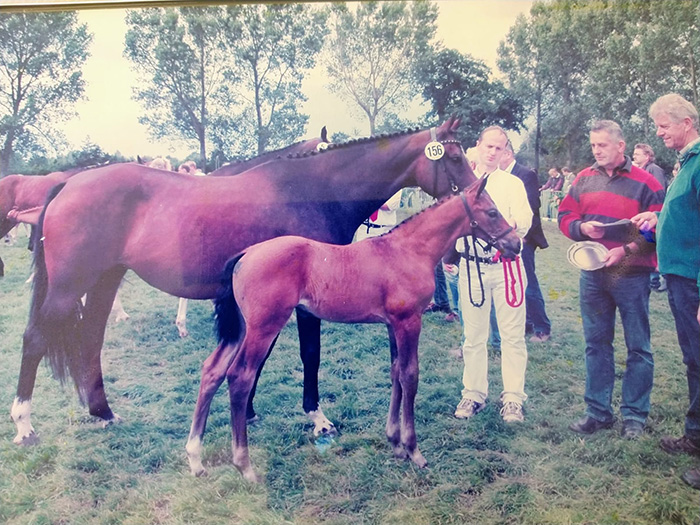
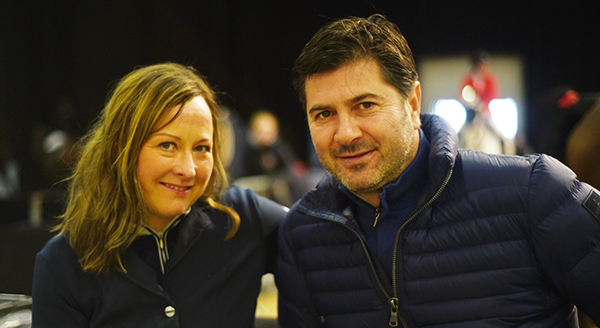
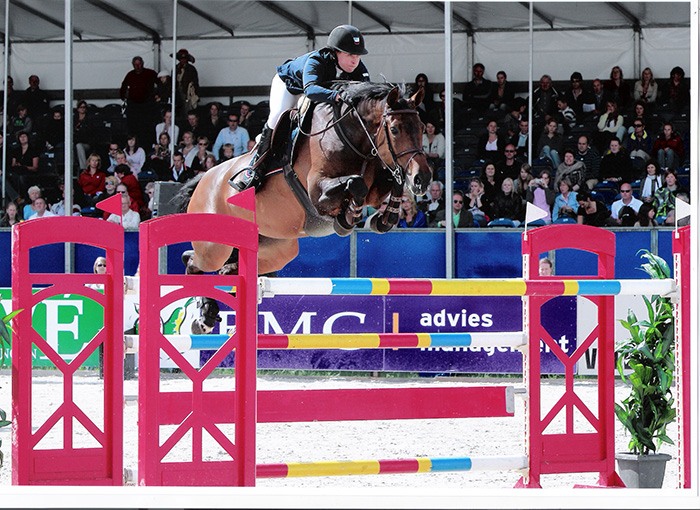
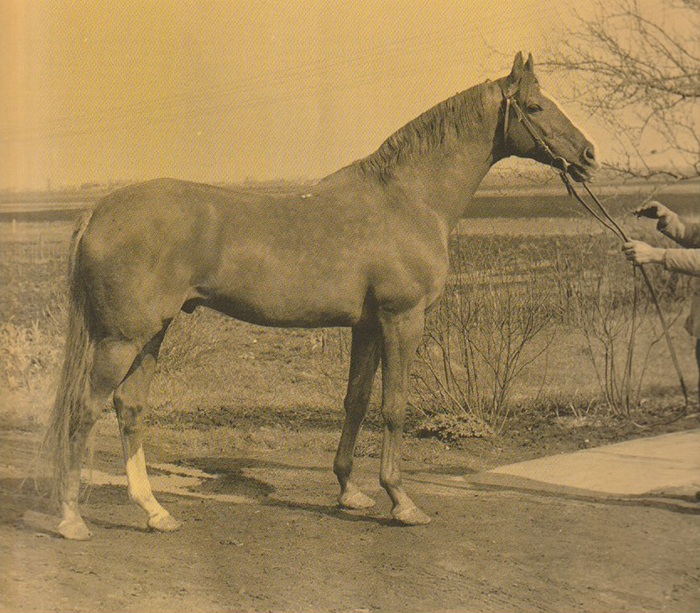
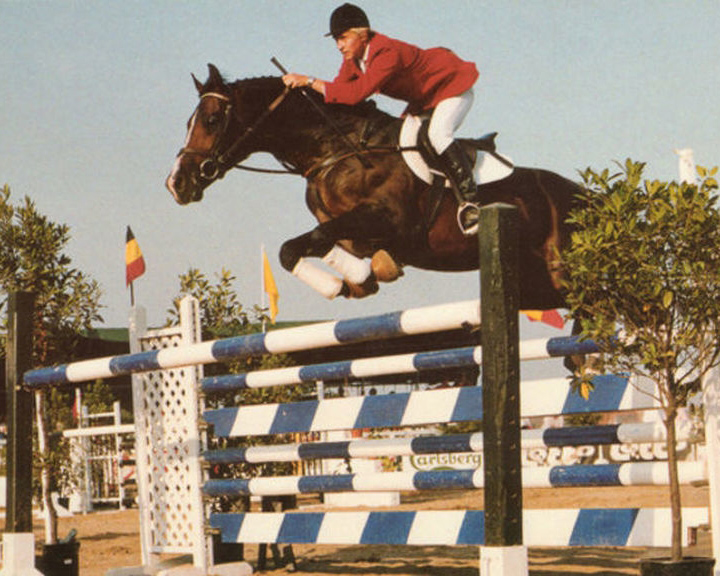
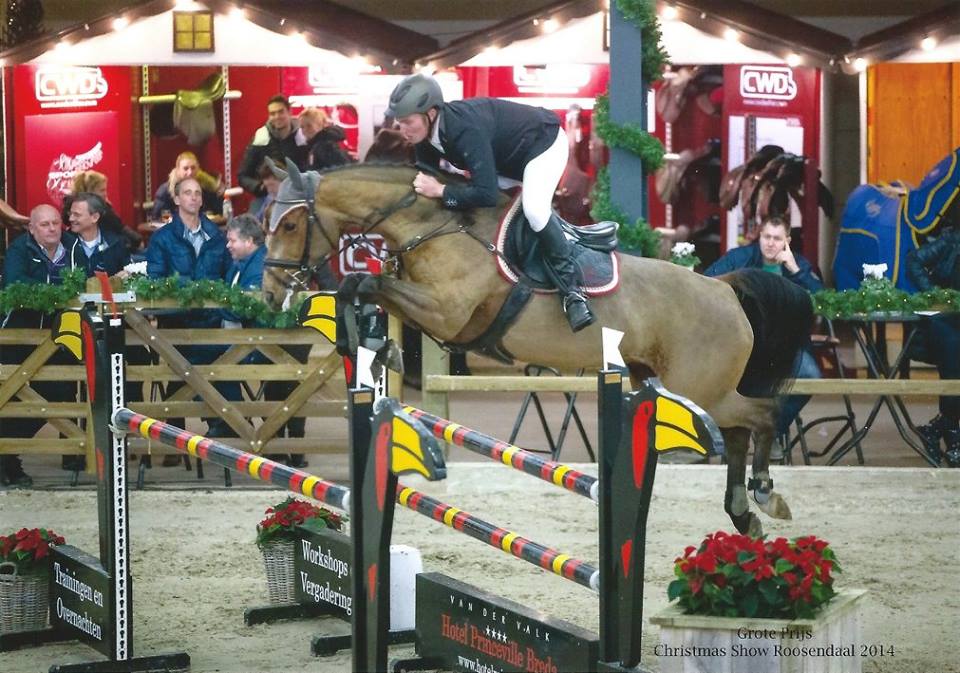
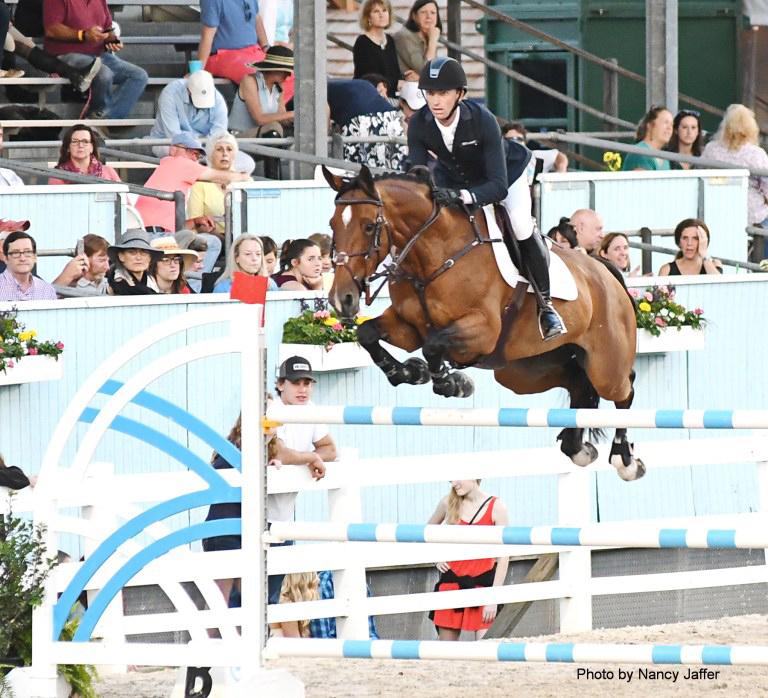
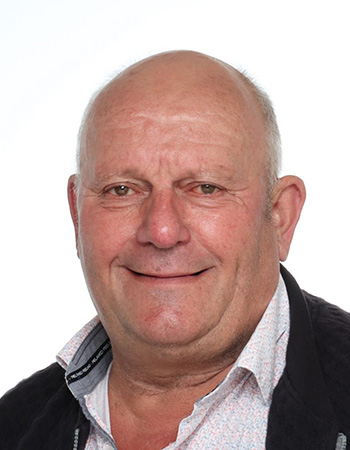
“We started to breed for the hobby. I have competed with harness horses and my daughters mostly showjumping. When they got older I wanted to breed with showjumping horses to follow up the kids ponies. I started breeding with showjumping horses in 1998. We had a pig farm. I had to quit the pig farming because I was allergic to them. In 2006 we went all over to the horses.”
“Now we breed between 10 and 15 foals each year. Only with homebred mares. We want to breed good looking horses who can move with a lot of suppleness. Also we breed mostly with young stallions because we also have to look at the pricetags. I am convinced you move faster forward with young stallions, but they have to go to a great dam line.”
“The harness horse mother of Ulen was a special character. She gave it also to Ulen we can write a book about her special character. Now she is 20 years old. She has a filly from Mattias (Comme il Faut / Catoki) and we have bred her back with Mattias.”
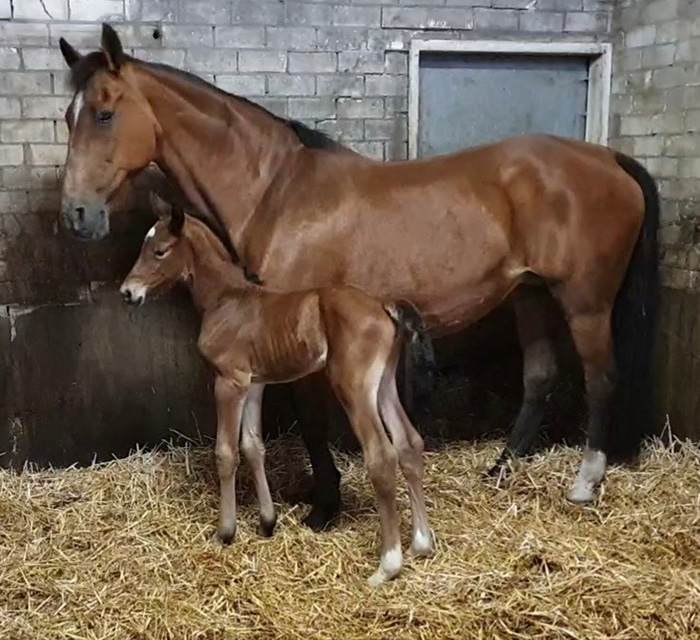
The photo of Ulen with her latest foal, born in April 2021. The foal was just born.
“Huntelaar, the colt that was in seventh place, the Zirocco Blue out of the Triomphe mare, comes from the line of one of the first breeders of jumping horses in Holland, Wim van Dam.”
“He was a good breeder, and he was a farmer and also a rider in the 60’s. He was right from the beginning breeding jumping horses – he was one of the first to do that. He bred the stallion Grandioso, who competed internationally, he also bred the stallion Damiro, he bred a lot of stallions.”
“In the beginning he bought in Germany, K. Torette, a Hanoverian mare. It was a very difficult mare and at that time we had no riding horses in Holland, just horses to work in the fields. Because the Hanoverian was very difficult, he asked the advice of a famous breeder from the Trotters, and he told Wim to take Peter Spencer, a Trotter stallion, and that was the beginning of his dam line, the line that produced Huntelaar!”




